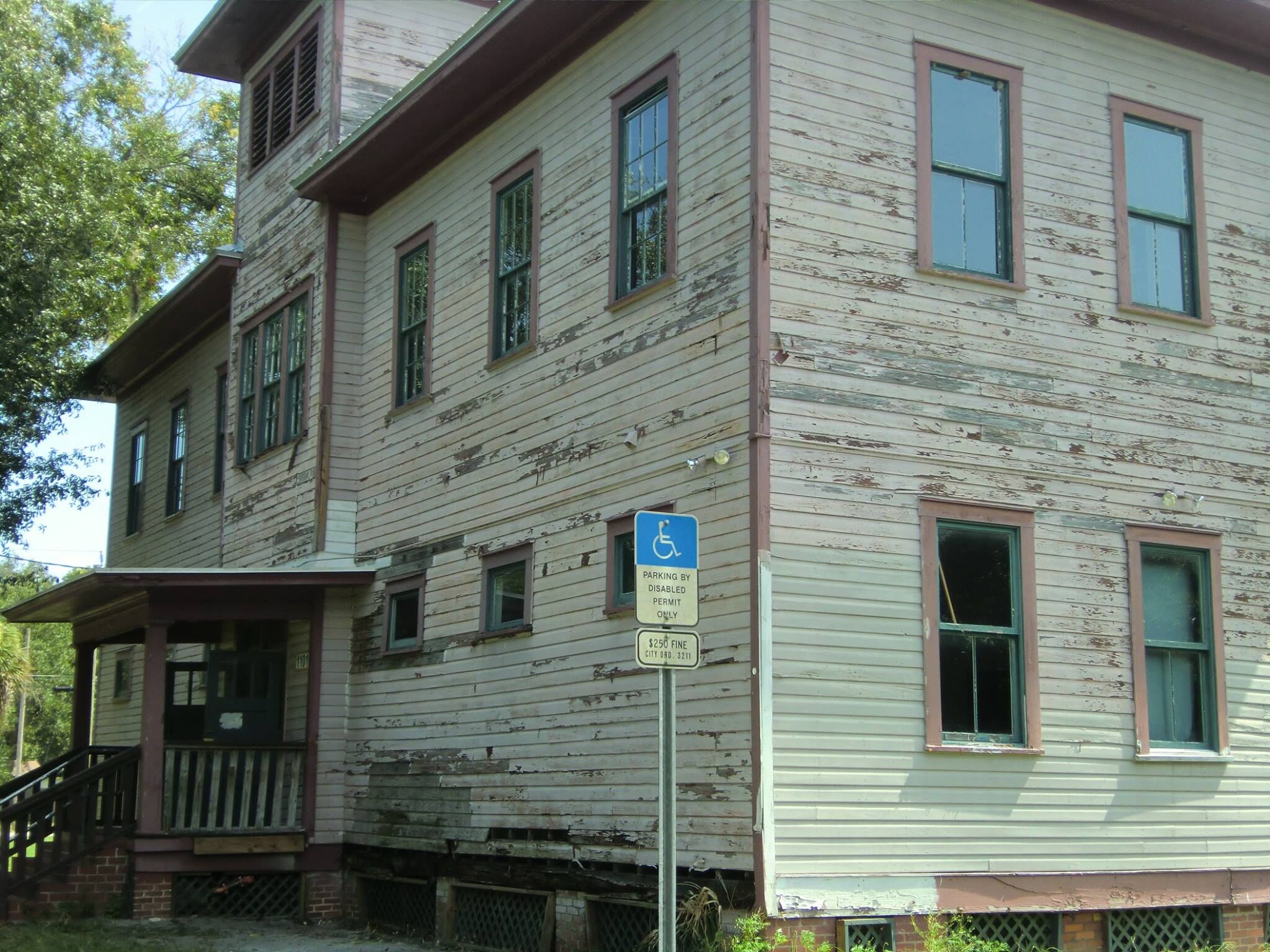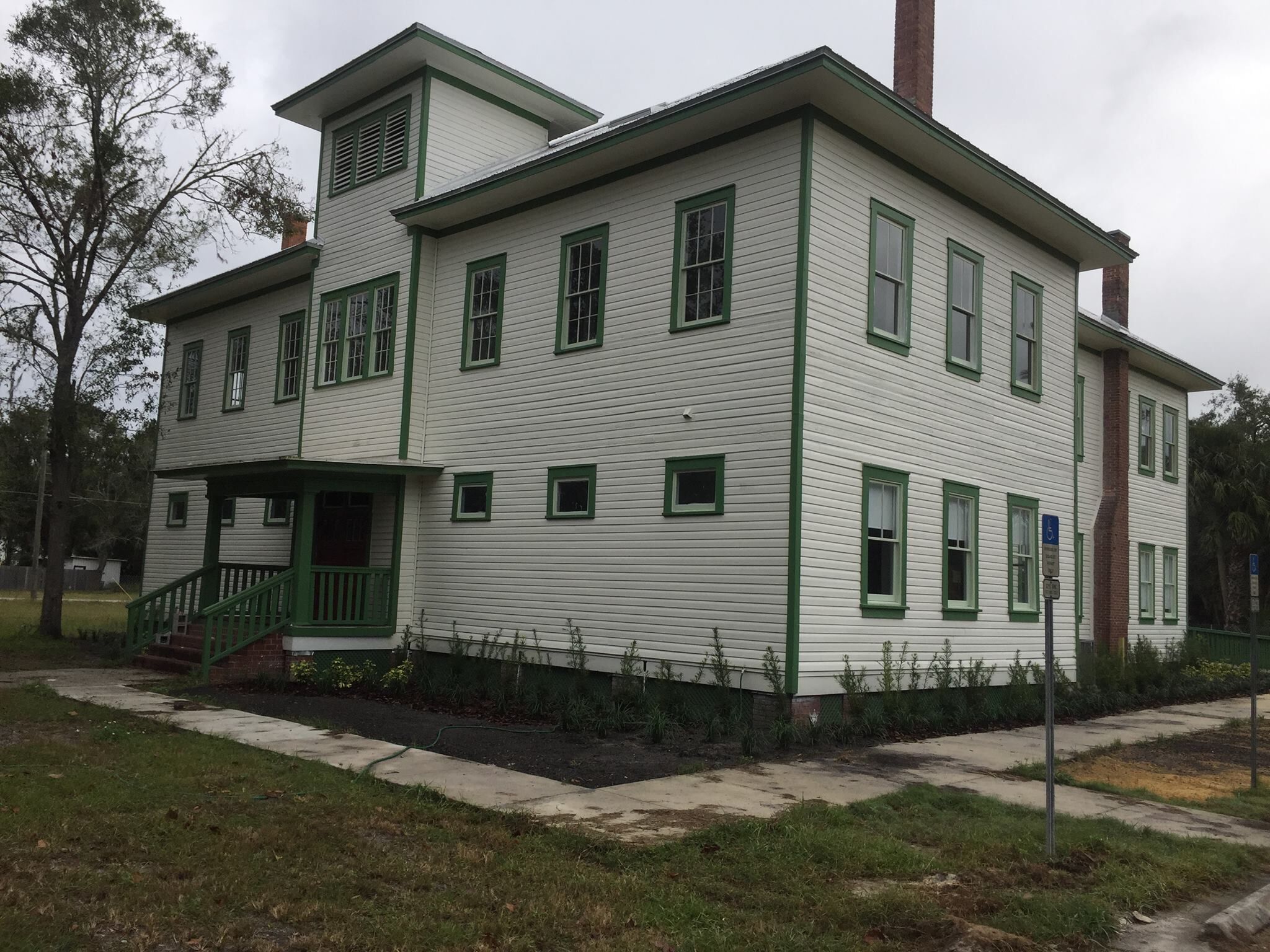By Kevin D. Gardner
It was once a centerpiece for the community, providing education for generations of young African American students in Sanford’s Georgetown neighborhood. Now, thanks to the hard work and dedication of members of the community, Historic Hopper Academy has been reborn as a community center and is a point of pride once again and an example of the value of historic preservation.
Hopper Academy, located at 1101 Pine Ave., was built in 1910, at the time one of the few schools in Florida designated to serve African American students. It initially admitted students up through 10th grade, and then, when Crooms Academy opened in 1926, it became a grammar school. For more than fifty years, until 1962, when it was replaced by newer elementary schools, Hopper dutifully educated the children of Georgetown.
The years after the school closed were not kind. The structure suffered water and termite damage and degenerated to the point that it was to be used for firefighter training in 1989. Thanks to the timely intervention of Charles Rowe, then the city community development officer, it was saved. Local residents began the effort to restore the school that year, but even after renovations began, some considered the building too far gone to be worth preserving.
Ownership of the building transferred in the early 1990s from Seminole County Public Schools to the Community Improvement Association of Seminole County, an organization set up to restore the structure. Since that time, the Community Improvement Association has secured grants from the state Division of Historical Resources and the City of Sanford to go along with more than $100,000 in additional donations to restore Hopper Academy. Restoration work began in 2001.
The two-story, wood-frame building has since recaptured much of its former glory. Its peeling red paint has given way to a fresh coat of white. Nearly all the siding on the first floor has been replaced, along with all the walls.
The stunning original wood floors in the second-story auditorium have been patched and restored. “It took 193 patches to restore these floors,” said Art Woodruff, a city commissioner and member of the Community Improvement Association board.
The roof has been replaced, along with the foundation and floor joists. Much of the latest work, such as painting, has been done by volunteers, and the restoration effort has benefited from the contributions of three Eagle Scout projects. Remaining work includes replacing the second-floor air conditioning unit and installing a chair lift for ADA compliance.
The St. Johns River Festival of the Arts is the first group to make use of the new Historic Hopper Academy, holding art classes there every Wednesday. The group plans to install a kiln behind the building for firing ceramics. The Seminole County Printmakers will soon take up residence as well.
The building is a piece of Georgetown history, and has been recognized as a local historic landmark in 1991 and listed on the National Register of Historic Places in 2015. And it will soon house a collection of items for a planned Georgetown history room, Woodruff said.
To learn more about Historic Hopper Academy or to donate to the restoration effort, visit hopperacademy.org.
Before

After

 My Sanford Seminole Magazine LIFESTYLE | BUSINESS | TOURISM
My Sanford Seminole Magazine LIFESTYLE | BUSINESS | TOURISM

